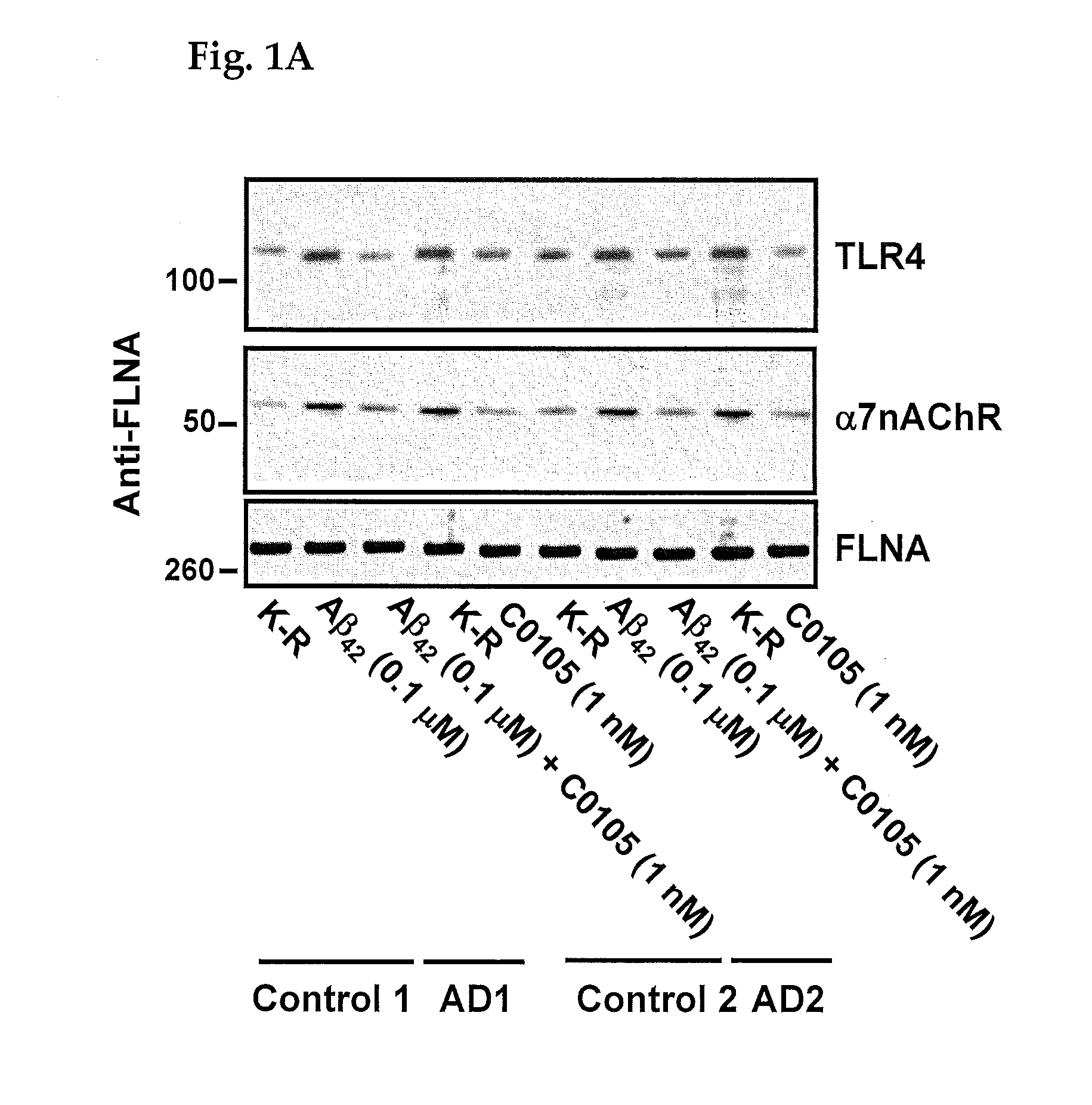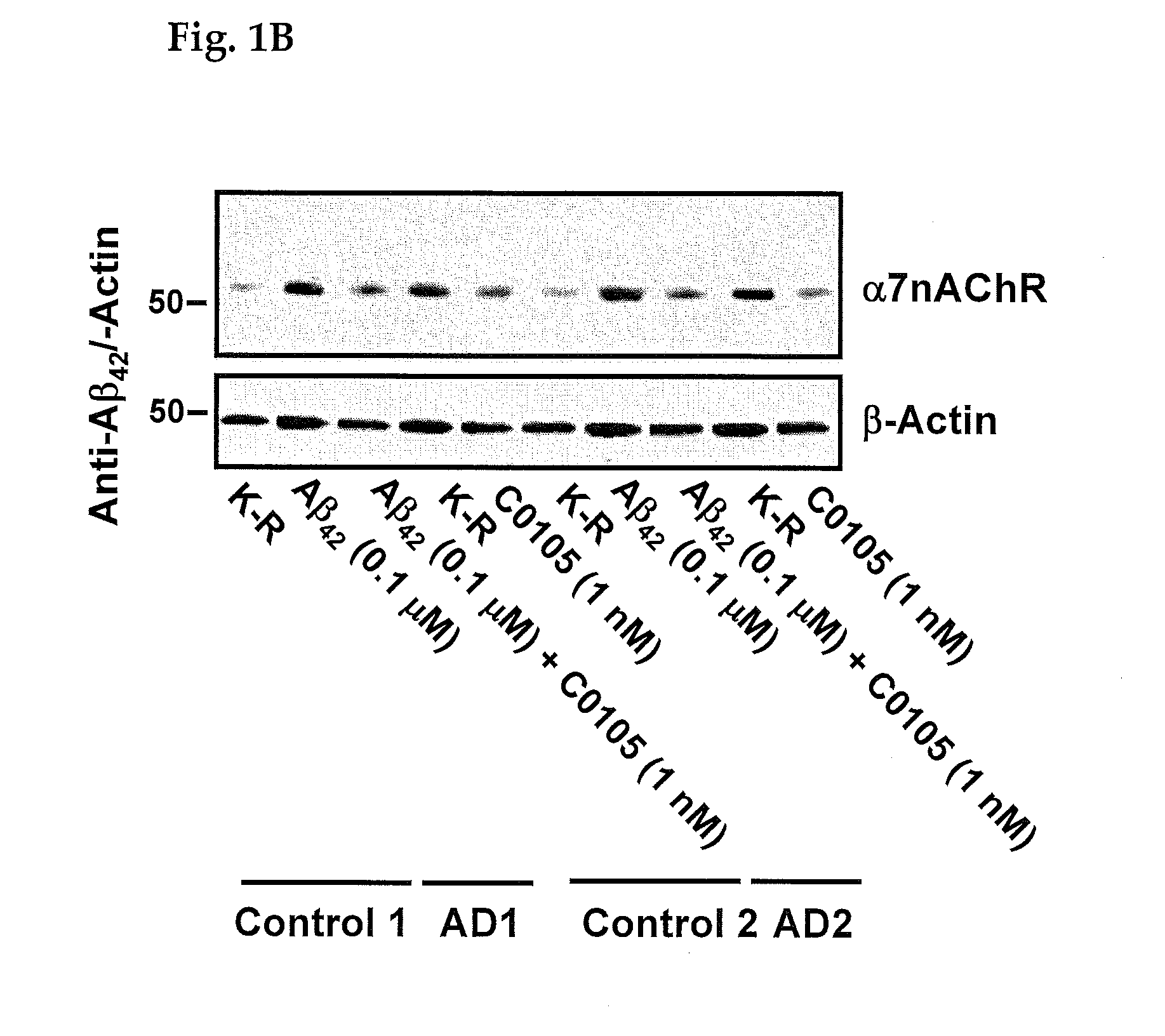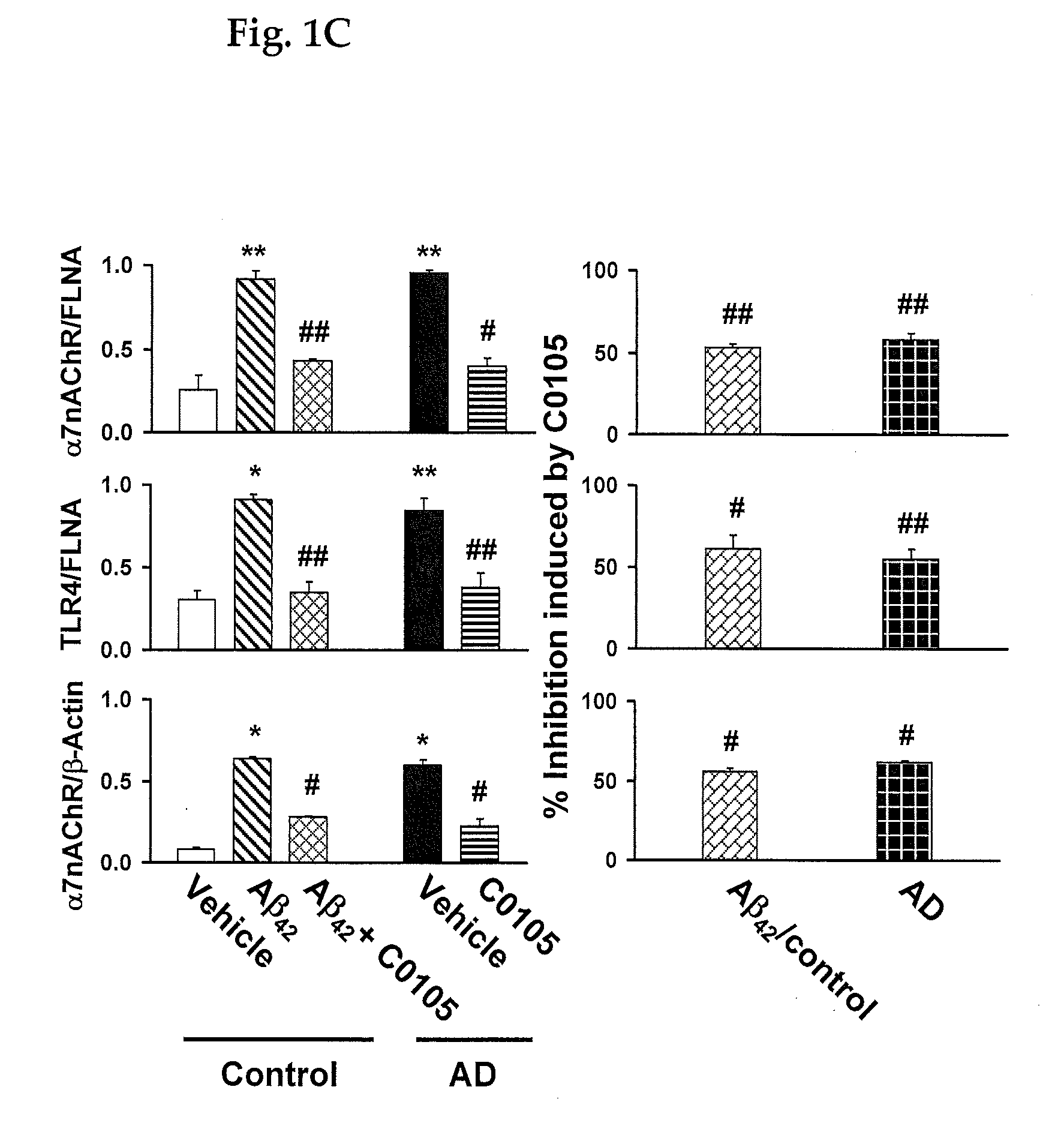Alzheimer's disease assay in a living patient
a technology for alzheimer's disease and assays, applied in the field of alzheimer's disease (ad), can solve problems such as possible loss of accuracy and/or precision, and achieve the effect of improving cognition and improving the state of patient's diseas
- Summary
- Abstract
- Description
- Claims
- Application Information
AI Technical Summary
Benefits of technology
Problems solved by technology
Method used
Image
Examples
example 1
FITC-NLX-Based FLNA Screening Assay
[0543]A. Streptavidin-Coated 96-Well Plates
[0544]Streptavidin-coated 96-well plates (Reacti-Bind™ NeutrAvidin™ High binding capacity coated 96-well plate, Pierce-ENDOGEN) are washed three times with 200 μl of 50 mM Tris HCl, pH 7.4 according to the manufacturer's recommendation.
[0545]B. N-Biotinylated VAKGL Pentapeptide (Bn-VAKGL) (SEQ ID NO: 1)
[0546]Bn-VAKGL peptide (0.5 mg / plate) is dissolved in 50 μl DMSO and then added to 4450 μl of 50 mM Tris HCl, pH 7.4, containing 100 mM NaCl and protease inhibitors (binding medium) as well as 500 μl superblock in PBS (Pierce-ENDOGEN) [final concentration for DMSO: 1%].
[0547]C. Coupling of Bn-VAKGL Peptides to Streptavidin-Coated Plate
[0548]The washed streptavidin-coated plates are contacted with 5 μg / well of Bn-VAKGL (100 μl) for 1 hour (incubated) with constant shaking at 25° C. [50 μl of Bn-VAKGL peptide solution from B+50 μl binding medium, final concentration for DMSO: 0.5%]. At the end of the incubatio...
example 2
MOR Agonist Activity Using
[0566]GTPγS Binding Assay
[0567]To assess the mu opiate receptor (MOR) agonist activity of positive compounds from the FLNA screening, compounds were tested in a [35S]GTPγS binding assay using striatal membranes. A previous study has shown that in striatal membranes, activation of MOR leads to an increase in [35S]GTPγS binding to Gαo (Wang et al., 2005 Neuroscience 135:247-261). This assay measures a functional consequence of receptor occupancy at one of the earliest receptor-mediated events. The assay permits for traditional pharmacological parameters of potency, efficacy and antagonist affinity, with the advantage that agonist measures are not subjected to amplification or other modulation that may occur when analyzing parameters further downstream of the receptor.
[0568]Thus, striatal tissue was homogenized in 10 volumes of ice cold 25 mM HEPES buffer, pH 7.4, which contained 1 mM EGTA, 100 mM sucrose, 50 μg / ml leupeptin, 0.04 mM PMSF, 2 μg / ml soybean tryp...
example 3a
Pilot Study: Western Blot Assay Assessment of FLNA-α7nAChR / TLR4 and Aβ42-α7nAChR Associations by Co-Immunoprecipitation
[0581]To prepare lymphocytes, 7 ml of venous blood was collected into an EDTA-containing collecting tube or S-monovette (Sarstedt, Newton, N.C.). Collected blood (6 ml) was layered onto 6 ml HISTOPAQUE-1077 (Sigma, St Louis, Mo.) at 25° C. and the entire anti-coagulated blood was centrifuged at 400×g for 30 minutes (25° C.) to yield plasma (top layer) and lymphocytes (opaque interface). The lymphocytes were washed twice by mixing with 6 ml oxygenated Kreb's-Ringer followed by centrifugation at 250×g for 10 minutes and re-suspension. The final pellet was resuspended in 250 μl oxygenated Krebs-Ringer prior to protein content determination by the Bradford method and assessment of the levels of FLNA—α7nAChR, FLNA-TLR4 and α7nAChR-Aβ42 complexes. To store lymphocytes, the lymphocyte pellet was resuspended in 250 μl ice-cold oxygenated Kreb's-Ringer containing 10% glycero...
PUM
 Login to View More
Login to View More Abstract
Description
Claims
Application Information
 Login to View More
Login to View More - R&D
- Intellectual Property
- Life Sciences
- Materials
- Tech Scout
- Unparalleled Data Quality
- Higher Quality Content
- 60% Fewer Hallucinations
Browse by: Latest US Patents, China's latest patents, Technical Efficacy Thesaurus, Application Domain, Technology Topic, Popular Technical Reports.
© 2025 PatSnap. All rights reserved.Legal|Privacy policy|Modern Slavery Act Transparency Statement|Sitemap|About US| Contact US: help@patsnap.com



